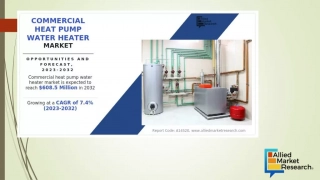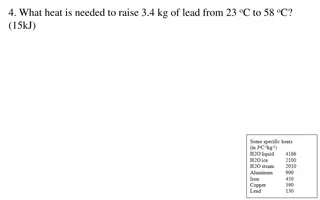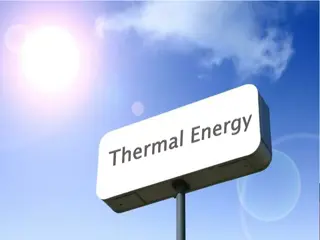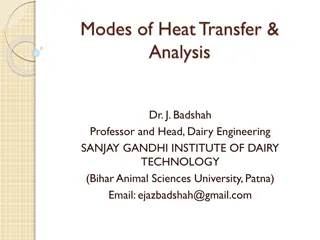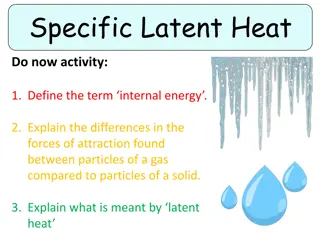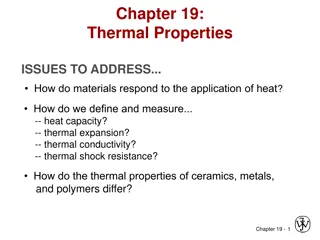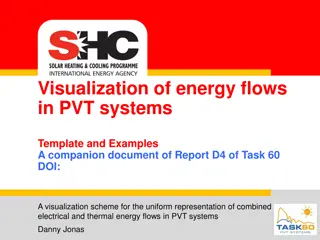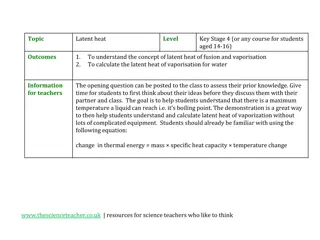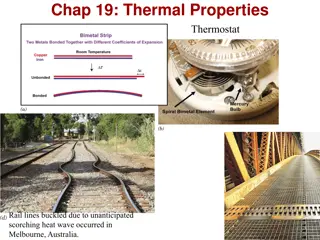
Packed Bed Latent Heat Storage in Thermal Energy Storage Systems
Thermal energy storage units using latent heat storage in packed beds with paraffin as phase change material for efficient heat accumulation from solar, geothermal, or waste heat sources.
Download Presentation

Please find below an Image/Link to download the presentation.
The content on the website is provided AS IS for your information and personal use only. It may not be sold, licensed, or shared on other websites without obtaining consent from the author. If you encounter any issues during the download, it is possible that the publisher has removed the file from their server.
You are allowed to download the files provided on this website for personal or commercial use, subject to the condition that they are used lawfully. All files are the property of their respective owners.
The content on the website is provided AS IS for your information and personal use only. It may not be sold, licensed, or shared on other websites without obtaining consent from the author.
E N D
Presentation Transcript
Introduction Thermal energy storage (TES) units are used to accumulate thermal energy from solar, geothermal, or waste heat sources The simplest TES units are built from water tanks, often found in households, where the solar energy is stored as sensible heat These systems are called sensible heat storage (SHS) units The thermal capacity of these tanks can be further increased by including latent heat, which gives rise to latent heat storage (LHS) units Typically, LHS tanks contain spherical capsules filled with paraffin as phase change material
Introduction Paraffin is a suitable phase change material to include the effect of latent heat, as it is relatively inexpensive, reliable, and nontoxic, and it is commercially available for a wide range of melting temperatures
Model Definition The model geometry is shown in figure Model setup
Model Definition Free and Porous Media Flow
Model Definition Heat Transfer in Solids and Fluids
Results The tank reaches a temperature of 70 C after approximately 11 hours The figure shows the resulting velocity and temperature distribution Velocity field (streamlines) with the gray color indicating the pressure and temperature field (color) after 13 hours
Results The figure shows the evolution of the paraffin temperature, the water temperature, and the weighted average (porous- medium) temperature During the phase change, the encapsulated paraffin is not in thermal equilibrium with the surrounding water Evolution of water (dashed), paraffin (dotted) and average porous medium temperature (solid) during phase change for top (red), center (green) and low (blue) position
Results Measuring the water temperature at the inlet or the outlet does not give accurate information about neither the temperature inside the capsules nor the phase in which the paraffin wax is Evolution of water (dashed), paraffin (dotted) and average porous medium temperature (solid) during phase change for top (red), center (green) and low (blue) position
Results The figure shows the phase distribution after 7 hours Near the walls, where the flow velocity is negligible, the phase transition has not yet begun while it is already completed in the center of the tank Distribution of solid phase (blue) and liquid phase (yellow) after 7 hours
Results The evolution of the paraffin phase distribution is visualized in the figure It starts at about 4 hours when water is heated up to the melting temperature of 60 C Paraffin is completely molten after about 10 hours Phase distribution after 4, 6, 8, and 10 hours
Results The latent heat storage tank is considered fully charged as soon as a temperature of 70 C is reached everywhere, which happens after approximately 11 hours Phase distribution after 4, 6, 8, and 10 hours

